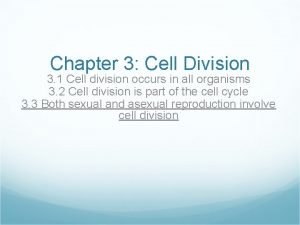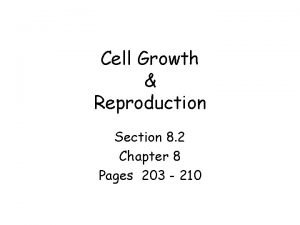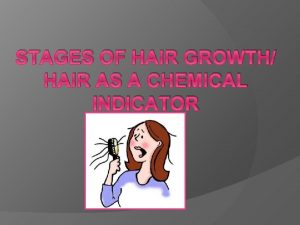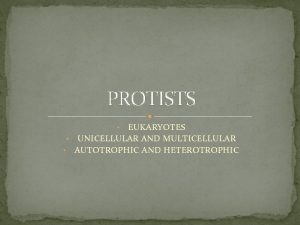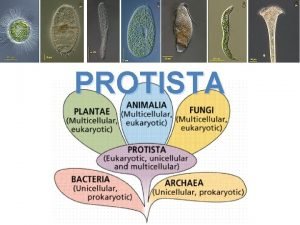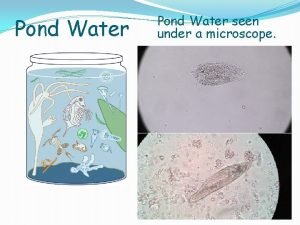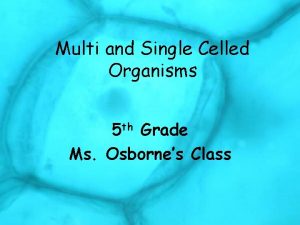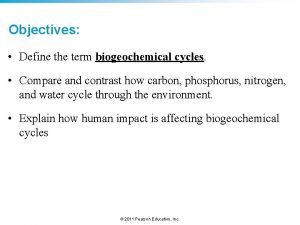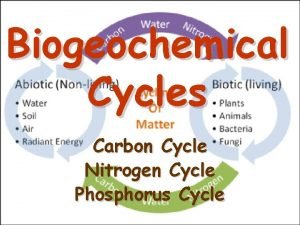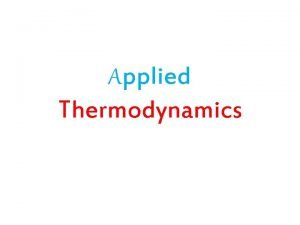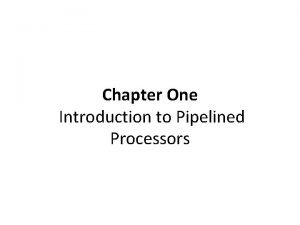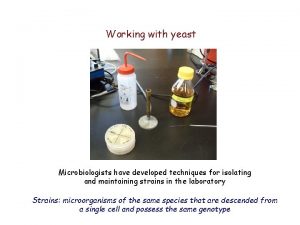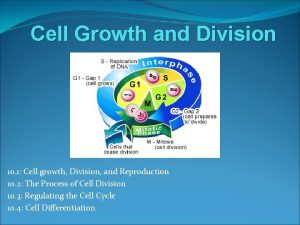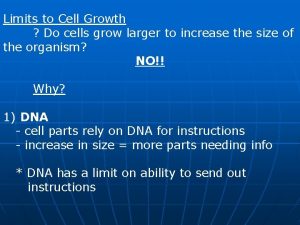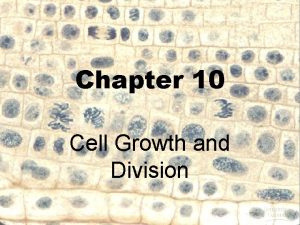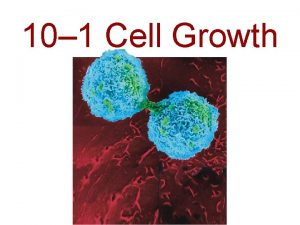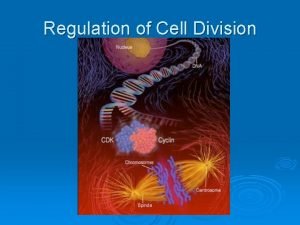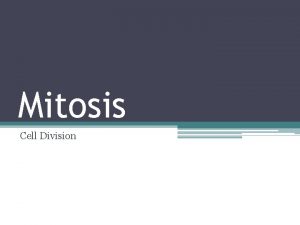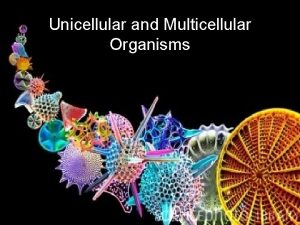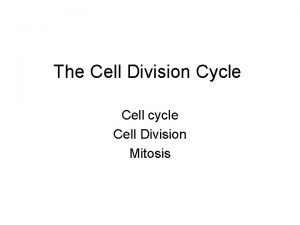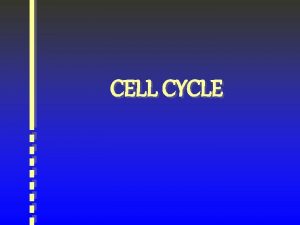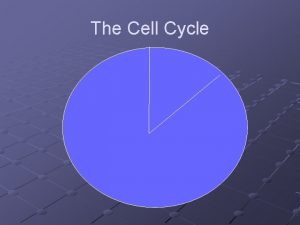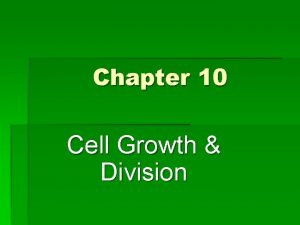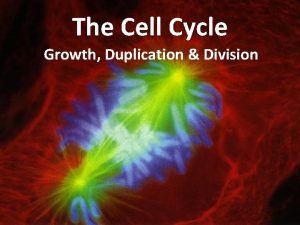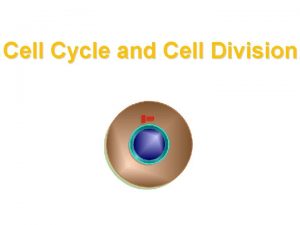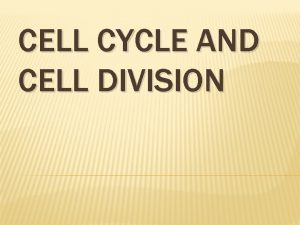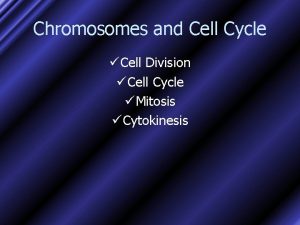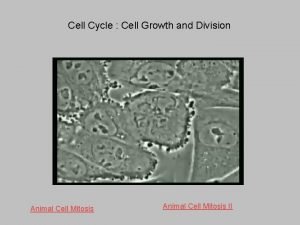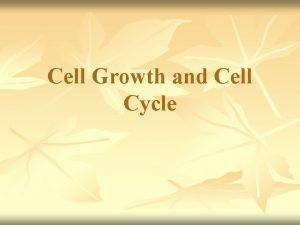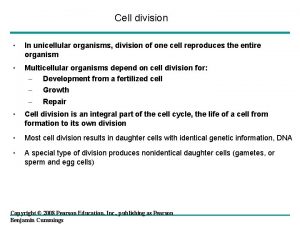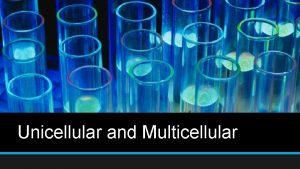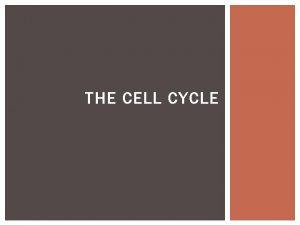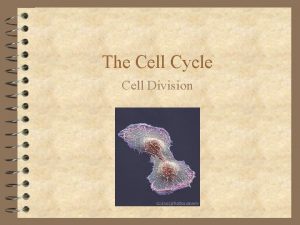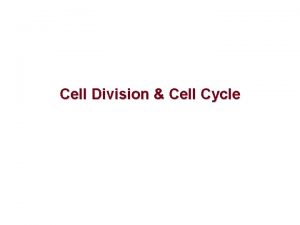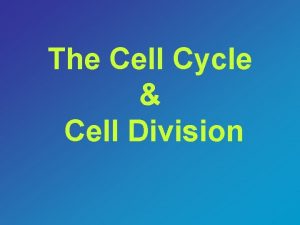Cell cycle Cell division Unicellular Cell growth and
















































- Slides: 48

Cell cycle Cell division Unicellular Cell growth and DNA replication throughout cell cycle Multicellular §Division through defined phases §Cell growth continuous §DNA synthesis is in only one phase §Cell growth and DNA synthesis highly coordinated and regulated §Cell cycle controlled by a series of protein kinases §Defects in cell cycle regulation-cancer


Why cell cycle? Ø Ø Cell division is regulated by highly conserved networks The comparative approach will illuminate the variation in the intrinsic stability of cell cycle controls in the different species Cell cycle progression regulating mechanisms in eukaryotes are largely conserved: cells as different as yeast and mammalian cells use the same kind of regulatory molecules to trigger cell cycle progression new insights in cell cycle regulation and the mechanisms that prevent uncontrolled proliferation of cells way to novel anti-tumor drugs cancer Infections fungal & viral Atheriosklerosis Restenosis Cell cycle Malaria Tissue engeneering Tissue repair & regeneration Yield Growth rate

INTERPHASE S (DNA synthesis) G 1 is ito MIT (M) OTIC PHA SE M to y C sis es n ki G 2

0. 5 µm Mitosis Chromosome duplication (including DNA synthesis) Centromere Sister chromatids Separation of sister chromatids Centromeres Sister chromatids

http: //www. biologymad. com/Cell. Division/Cell. Di 1. gif

11 hrs 1 hr 8 hrs 90 min. 4 hrs Human cells (24 hours) Mitosis Yeast cells (90 minutes) G 0 Synthesis Embryo cells (less than 30 min. ) Skin fibroblasts, liver cells

Cells at different stages of cell cycle can be distinguished by their DNA content

Regulation of cell cycle S. cerevisiae Nutrients Start Mating factors Cell size G 0 Animal cells Restriction point Growth factors

Regulation of cell cycle

Daughter chromosomes not aligned properly Spindle checkpoint S -checkpoint DNA damage DNA repair Cell cycle checkpoints?

Summary – Cells divide by following carefully scripted program of molecular events collectively called the cell cycle. – The cell cycle is subdivided into five phases named G 1, S, G 2, M, and G 0. Cells not actively dividing reside in G 1 or G 0 phase. – Several checkpoints define critical decision-making events in the cell cycle



Key molecule responsible for cell cycle regulation • Identification of MPF: Maturation Promoting Factor

Yeast Is a Model System for Analyzing Cell Cycle S. pombe lengthens and then divides with a septum, while S. cerevisiae buds during a cycle in which G 2 is absent and M occupies the greatest part.

Key molecule responsible for cell cycle Regulation ØS. cereviceae ØTemperature sensitive mutants (cell division cycle mutants) ØCell cycle arrested at START, (mutation in protein called Cdc 2) ØA similar protein identified in S. pombe ØProtein Cdc 2 controls both G 1 and G 2 checkpoints ØCharacterization- Cdc is a protein kinase START

Key molecule responsible for cell cycle Regulation • Accumulation and degradation of cyclins The cyclins were identified as proteins that accumulate throughout interphase and are rapidly degraded toward the end of mitosis.

Key molecule responsible for cell cycle Regulation MPF: M-phase Promoting Factor • MPF is composed of two key subunits: Cdc 2 and Cyclin B. – Cdc 2 is the protein that encoded by genes which are required for passage through START as well as for entry into mitosis. – Cyclin B is a regulatory Cyclin dependant Kinases subunit required for catalytic activity of the Cdc 2 protein (Cdks) kinase.

1970 s-80 s | 2001 Cyclins & Cdks • Interaction of Cdk’s & different cyclins triggers the stages of the cell cycle Leland H. Hartwell checkpoints Tim Hunt Cdks Sir Paul Nurse cyclins

Summary – Progression through the cell cycle is under the control of proteins that form checkpoints – These proteins are protein kinases – Protein kinases can function only with cyclins Cyclin Kinase X Cyclin Kinase √

Four molecular mechanisms that regulate Activities of Cdk's • Mechanisms of Cdk regulation

Families of Cyclins and Cyclin-Dependent Kinases The cell cycles of higher eukaryotes is controlled by multiple cyclins and cdc 2 Cyclin dependent kinases (cdks) Labelled numerically Cdc 2 - Cdk 1 -Cdk 8 Cyclins Labelled –alphabets Cyclin-B, cyclin-G, cyclin E

Control by cyclin/CDK complexes Distinct cyclin-cdk complexes control progression through cell cycle checkpoints.

Growth Factors and D-type Cyclins Growth factors D-type cyclin Restriction point


Control of the G 1 checkpoint expression of most CDKs does not vary much throughout the cycle, but without their corresponding cyclins, they are not functional

RB = tumour suppressor

Control of the G 1 checkpoint Cyclin A E 2 F turns on the expression of genes required for DNA synthesis

Regulation of Cell Cycle INK 4 (RB ) Cell 2004; 116: 221 -34

Cyclins • Cyclines and cyclin-dependent kinases (cdks) – The cyclines have oscillating levels during cell cycle – The cyclines are regulatory subunits of the CDK-kinases • cyclines+ cdk �cell cycle-dependent variations in the activity of the kinases Cyclin E Cyclin A Cyclin B determined by mitogenic growth factors Cyclin D G 0 G 1 S G 2 M




Control of the S checkpoint Assembly of the prereplication complex.

Control of the S checkpoint • 3 key steps Activation of the replication complex.

G 2 check point- check for DNA damage Cyclin B synthesized Cyclin B accumulates

G 2 - check point Wee 1 protein kinase Inactive Cdc 25 ADP Inactive CDK 1

Control of the G 2 checkpoint ATM/R P ATP ADP

CDK inhibitors

CDKs are regulated by Cyclin Dependent Kinase Inhibitors (CKIs) p 21 CDK Cyclin p 21 p 16 CDK 4 p 16 Cyclin active inactive CDK 4/6 Cyclin D + INK 4 + Cyclin D

DNA damage, other insults Growth Signal p 53 p 21 G 1 phase cyclin/CDK S phase

Inhibitor of Cell Cycle Progression Mdm 2 p 53 Normal Cells Mdm 2 stimulates degradation of p 53. Cellular levels of p 53 are low

P ATM/R p 53 X Mdm 2

Inhibitor of Cell Cycle Progression • Induction of p 21 by DNA damage P p 53 Conc. increase p 21 CDK Cyclin p 21

Overview of checkpoint controls in the cell cycle Lodish et al. , 2004


Overview of checkpoint controls in the cell cycle Lodish et al. , 2004
 Events of the cell cycle
Events of the cell cycle Cell cycle and cell division
Cell cycle and cell division Cell division phases
Cell division phases Unicellular cell division
Unicellular cell division Chapter 8 cell growth and division section 8-2 answer key
Chapter 8 cell growth and division section 8-2 answer key Cell growth division and reproduction
Cell growth division and reproduction Relative growth rate equation
Relative growth rate equation Monocot vs eudicot
Monocot vs eudicot Primary growth and secondary growth in plants
Primary growth and secondary growth in plants Chapter 35 plant structure growth and development
Chapter 35 plant structure growth and development Short division vs long division
Short division vs long division Long division how to
Long division how to Synthetic devision
Synthetic devision Long division objectives
Long division objectives Multicellular animal name
Multicellular animal name Multi cellular organism
Multi cellular organism Is a nerve cell multicellular or unicellular
Is a nerve cell multicellular or unicellular Growthchain
Growthchain Geometric vs exponential growth
Geometric vs exponential growth Neoclassical growth theory vs. endogenous growth theory
Neoclassical growth theory vs. endogenous growth theory Organic growth vs inorganic growth
Organic growth vs inorganic growth Biology.arizona.edu/cell bio/activities/cell cycle/01.html
Biology.arizona.edu/cell bio/activities/cell cycle/01.html Mitosis meiosis
Mitosis meiosis Chromosome labeled
Chromosome labeled Two cells are produced
Two cells are produced Pubic hair growth cycle
Pubic hair growth cycle Unicellular multicellular
Unicellular multicellular Is protista autotrophic or heterotrophic
Is protista autotrophic or heterotrophic Are birds unicellular or multicellular
Are birds unicellular or multicellular How are unicellular and multicellular organisms alike
How are unicellular and multicellular organisms alike Multicellular organisms definition
Multicellular organisms definition What kingdom is photosynthetic aquatic and unicellular
What kingdom is photosynthetic aquatic and unicellular Is pond water unicellular or multicellular
Is pond water unicellular or multicellular Single celled life form
Single celled life form Significance of biogeochemical cycle
Significance of biogeochemical cycle Difference between phosphorus cycle and carbon cycle
Difference between phosphorus cycle and carbon cycle Difference between open cycle and closed cycle gas turbine
Difference between open cycle and closed cycle gas turbine Simple cycle and greedy cycle
Simple cycle and greedy cycle Chapter 5 two-cycle and four-cycle engines answers
Chapter 5 two-cycle and four-cycle engines answers Mhd generator ppt
Mhd generator ppt Yeast cell growth curve
Yeast cell growth curve 10-1 cell growth
10-1 cell growth Limits to cell growth
Limits to cell growth Section 10-1 cell growth answer key
Section 10-1 cell growth answer key Limits to cell growth
Limits to cell growth M phase
M phase Frequency of cell division
Frequency of cell division Concept map of mitosis
Concept map of mitosis Why is cell division important
Why is cell division important



